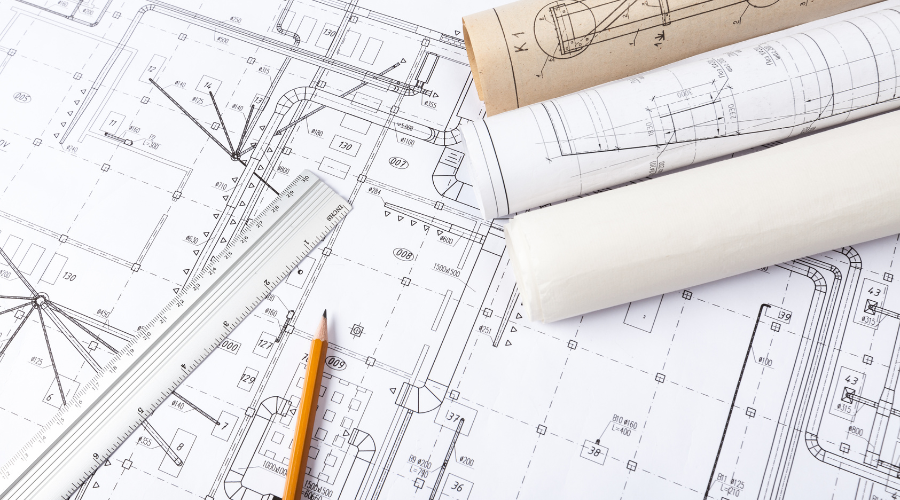Precision, productivity, and practical communication are required in architecture and construction. Computer-aided design (CAD) drafting services for architects are crucial. These services include architects, engineers, and designers who create straightforward and comparable architectural projects that serve as building blueprints.
Utilizing the proper methods in architectural drafting services is essential for success, whether you are a construction business trying to enhance project delivery or an architect trying to expedite your design approach. These tactics can assist you in growing your architectural CAD drafting services.
What Methods Lead to Success in Architectural CAD Drafting?
Adopt State-of-the-art CAD Software and Tools
The software and tools used are the cornerstone of effective architectural drafting services. Today’s CAD software offers various refined capabilities that may significantly increase accuracy and productivity. Architects can access strong drawing, modeling, and visualization tools through programs like AutoCAD, Revit, and ArchiCAD.
An architectural visualization company can also include 3D modeling and rendering tools in the drafting technique to make accurate design models. This makes it easier for stakeholders to see the finished product and create more informed design options. One crucial tactic for success in architectural CAD drafting is to purchase the most current software and provide your team with continuous training.
Concentrate on Precision and Attention to Detail
One of the most essential advantages of CAD drafting is creating exact drawings. Precision and detail must be monitored closely to stop building errors that could result in costly mistakes. CAD software can exactly represent every design detail, including measurements and materials, decreasing the demand for future modifications and rework. Accuracy is also essential when collaborating with other professionals, such as structural engineers, mechanical engineers, and interior designers.
Standardize Operations and Workflows
Implementing standardized processes and workflows is another critical strategy for architectural CAD drafting services‘ success. You can streamline the design and construction, sharing and reviewing CAD drawings to how CAD drawings are created, shared, and re-reviewed. This includes developing templates for common elements, defining naming conventions, and using file management systems that allow for easy collaboration.
A constant workflow decreases the possibilities of mistakes and messes, making the drafting procedure more efficient. It also assists in enhancing communication among team associates and ensures that all drafts are aligned with the project’s plans and specifications.
Include 3D Modeling and Visualization
While conventional 2D drafting is still essential in architectural design, 3D modeling, and visualization have become increasingly significant in contemporary architecture. 3D models deliver a more interactive method of visualization. An architectural visualization company can help transform 2D projects into 3D models that accurately depict a building’s interior and exterior.
Combining 3D modeling with your CAD drafting services lets you offer complete design ideas to your clients and investors. These models also help determine possible problems earlier in the design procedure, saving time and money during construction.
Team and Share Effectively
Architectural CAD drafting is seldom solitary; it involves collaboration with professionals, clients, contractors, and structural engineers. Cooperation and efficient communication are essential to any architecture project’s success. To guarantee that all stakeholders can access the most recent CAD designs, use cloud-based solutions for simple file sharing and real-time collaboration.
Additionally, frequent meetings and transparent feedback loops guarantee that designs remain on course and that modifications are successfully conveyed. CAD and collaboration tools like BIM (Building Information Modeling) can be combined to enhance coordination and expedite processes.
Optimize for Sustainability and Efficiency
Concern over sustainability is on the rise in the architecture sector. Consider integrating sustainable design concepts into your plans during the CAD drawing phase. Architects can use CAD software to evaluate and improve ventilation, natural lighting, and energy efficiency designs.
These factors can create more environmentally friendly structures and lower long-term operating expenses. Design optimization for construction efficiency is also crucial. Modular components can be integrated with CAD drafting to reduce building time and costs. Ensuring aesthetically beautiful, practical, and sustainable architectural designs will result in more profitable projects and happy clients.
Remain Current with Industry Trends and Technologies
The architectural sector constantly changes, with new ideas and technologies appearing frequently. You can distinguish yourself from the competition by keeping up with these developments and incorporating cutting-edge technologies into your CAD drafting services. For instance, you can offer clients design experiences beyond traditional blueprints by combining virtual reality (VR) and augmented reality (AR) into your architectural visualization services.
Similarly, investigating AI-powered technologies for automation and design optimization can significantly increase drafting process efficiency. By staying ahead of the curve, you can ensure that your architectural CAD drafting services are competitive and in line with the most recent industry standards.
Final Takeaway
Technical proficiency, clear communication, and appropriate tactics are necessary to succeed in architectural drafting services. You can produce high-quality architectural designs that satisfy customer demands and construction specifications by utilizing cutting-edge software, emphasizing accuracy, standardizing workflows, and integrating 3D modeling and sustainable practices. Furthermore, staying current with industry developments and working well with other specialists guarantees that your services remain innovative and competitive. To stay ahead in a competitive market, architectural firms and construction businesses must implement these tactics to improve design capabilities and streamline procedures.



